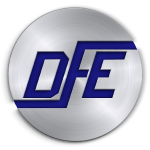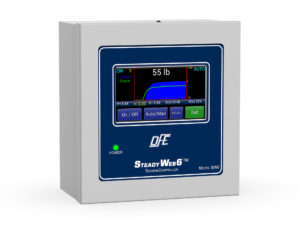The Important Role of Tension Control in the Manufacture of Flexible Display Technologies

The evolution of display technology has ushered in an era where flexibility is not just a feature but a fundamental requirement for innovation. From smartphones to wearable tech, flexible displays are at the forefront of this revolution. However, the secret to their success lies not just in the materials used, but in the precision of their layered manufacturing approach. In such applications, the stacking of components and substrates benefit remarkably from next-generation tension control technologies. Here are just a few examples:
OLED and AMOLED technology benefits immensely from tension control, which helps ensure that each pixel emits light uniformly. By precisely aligning functional layers such as anodes and cathodes, achievement of OLED’s deep blacks, vibrant colors and smooth gradation is assured. Tension control also helps increase the lifespan of flexible OLED displays used in folding devices by preventing material stretching and incidents of delamination during manufacturing.
MicroLEDs, with their potential for even higher brightness and efficiency, face some unique manufacturing challenges including uniform pixel placement. Tension control aids in the precise placement of micro-sized LEDs in layered manufacturing processes, critical for achieving high resolution and uniformity. By maintaining tighter registration tolerances, panel production can also scale better by ensuring consistent quality across larger surface areas or more complex shapes.
While QLED (Quantum Dot LED) typically uses rigid structures, advancements towards flexibility could leverage tension control in the future. A key challenge will be material integration, and the need to ensure quantum dots are uniformly distributed across flexible substrates, maintaining color accuracy and brightness. Addressing these challenges during manufacturing will allow semi-flexible and rollable QLED displays to maintain proper alignment during bending or use in curved applications.
eInk and electrophoretic display technologies, used for low-power applications like e-readers, also benefit from tension control. One crucial aspect is achieving consistency in the distribution of microcapsules containing electrophoretic materials, vital for uniform display quality. Tension control may also enhance the lifespan of flexible eInk devices by reducing wear and tear on display materials and components during the assembly process.
BENEFITS ACROSS TECHNOLOGIES
- Enhanced Form Factors: Precise tension control allows for the creation of displays that can bend, fold, or even stretch, opening up new design possibilities from foldable smartphones to wearable tech with curved or angled profiles.
- Improved Manufacturing Efficiency: By reducing defects caused by material misalignments, poor registration or stretching, tension control increases product yields, making production more cost-effective.
- Innovation in Display Applications: From curved TVs to fully flexible screens, tension control enables manufacturers to push the boundaries of display form-factors, enhancing user interaction and device aesthetics.

CONCLUSION
Tension control in the manufacturing flexible displays is not just about maintaining material integrity; it’s about unlocking the full potential of these technologies. Whether it’s the vibrant colors of OLED, the potential brightness of MicroLED, or the low-power efficiency of eInk, each technology stands to gain from precise tension management. As we look towards a future where displays might not only be seen but felt or interacted with in new ways, the role of tension control becomes increasingly pivotal. It’s a crucial element of the manufacturing process that ensures the displays of tomorrow can perform flawlessly, regardless of how they’re shaped or used.
Dover Flexo Electronics has decades of experience helping flexible display manufacturers tune their process with automatic tension control to reduce scrap and downtime, delivering higher profits as a result.
Typical turn-key tension control solutions incorporate:
• A closed-loop tension controller such as the SteadyWeb™ 6
• A load cell such as the Tension Roll® Transducer
• A Pneumatic Brake, Magnetic Particle Brake, Clutch or Motor Drive System
Customers integrating tension control with a PLC most often utilize:
• A load cell signal amplifier such as the TA1 TrueTension™ Amplifier or TA500 EtherNet/IP™ Tension Amplifier
• A load cell such as the Tension Roll® Transducer, a pair of convertible load cells such as the Model C Series Transducers or Under Pillow Block Transducers such as the Model F Series
DFE offers the highest quality tension sensing transducers and controllers to achieve top performance in unwind, rewind and process tension zones. Contact an application engineer to discuss your specific requirements today.
Do you have a similar tension application that you would like to discuss?
Complete the form below and a DFE Applications Engineer will contact you shortly.
DFE does not share information with 3rd party advertisers.
RESOURCES
Application Note: Tension Control for Flexible Display Manufacturing (PDF)






